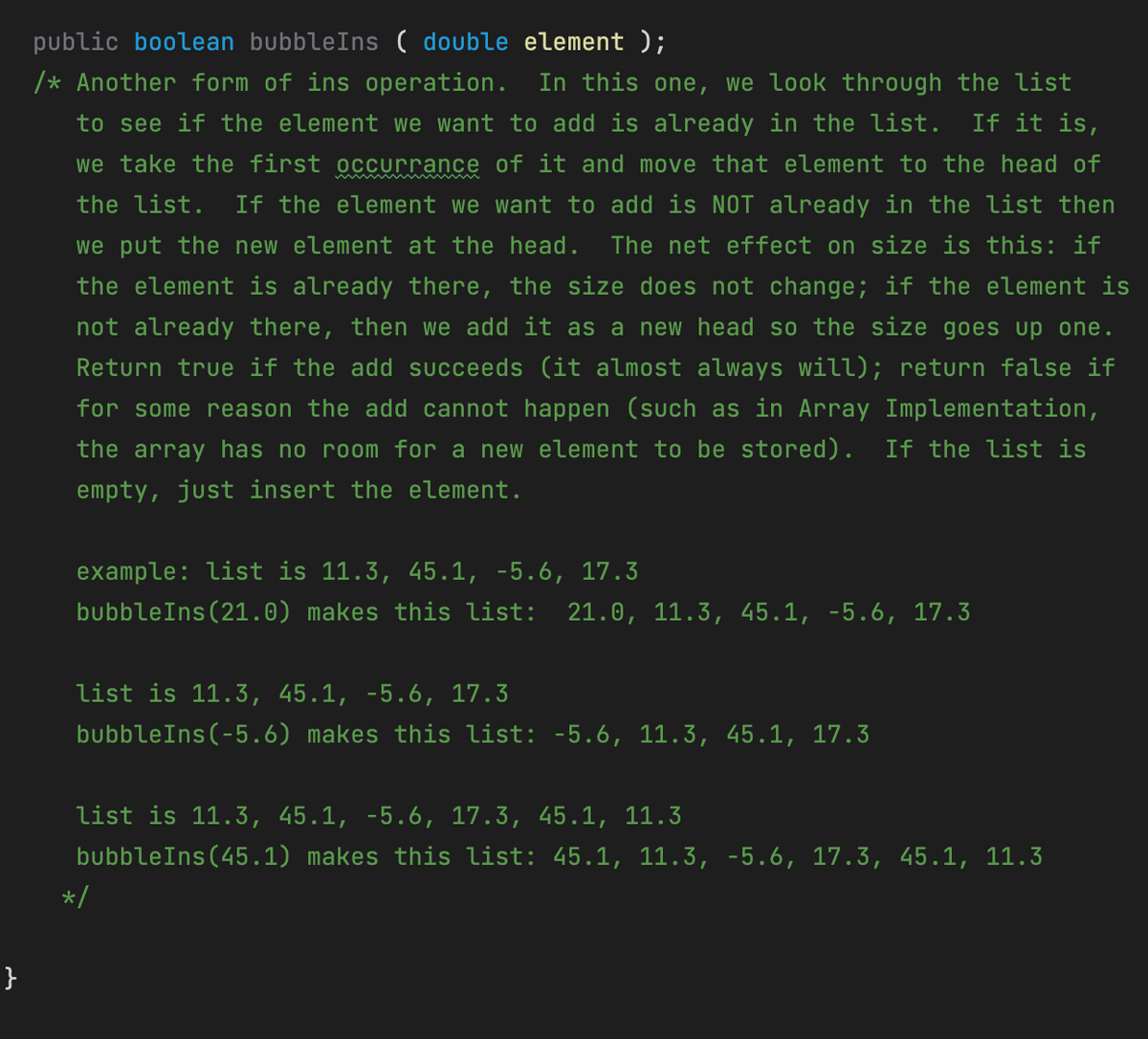public boolean bubbleIns ( double element ); /* Another form of ins operation. In this one, we look through the list to see if the element we want to add is already in the list. If it is, we take the first occurrance of it and move that element to the head of the list. If the element we want to add is NOT already in the list then we put the new element at the head. The net effect on size is this: if the element is already there, the size does not change; if the element is not already there, then we add it as a new head so the size goes up one. Return true if the add sUcceeds (it almost always will); return false if for some reason the add cannot happen (such as in Array Implementation, the array has no room for a new element to be stored). If the list is empty, just insert the element. example: list is 11.3, 45.1, -5.6, 17.3 bubbleIns(21.0) makes this list: 21.0, 11.3, 45.1, -5.6, 17.3 list is 11.3, 45.1, -5.6, 17.3 bubbleIns(-5.6) makes this list: -5.6, 11.3, 45.1, 17.3 list is 11.3, 45.1, -5.6, 17.3, 45.1, 11.3 bubbleIns(45.1) makes this list: 45.1, 11.3, -5.6, 17.3, 45.1, 11.3 */ }
In java language
description for question is in pictures
please and thank you!


Step 1 : Start
Step 2 : Declare the list and the length of the list in which the element is to be inserted.
Step 3 : Define a method bubbleIns() which takes the element to be inserted in the list.
Step 4 : Traversing the list and checking if the passed element is already present in the list. If found then shifting all the elements of the list by one place , place the element at the head and removing the already present element from the list AND Return True.
Step 5 : If the element is not already present in the list, Then shifting all the elements in the list by one place and inserting the element in the head of the list and return True.
Step 6 : If none of the conditions match the criteria then returning False.
Step 7 : In the main method initialize the list with the elements. And set the length of the list.
Step 8 : Printing the list before Inserting the element.
Step 9 : Call the bubbleIns() method while passing the element to be inserted in the list.
Step 10 : Printing the List after the Insertion.
Step 11 : Stop
Trending now
This is a popular solution!
Step by step
Solved in 4 steps with 7 images









